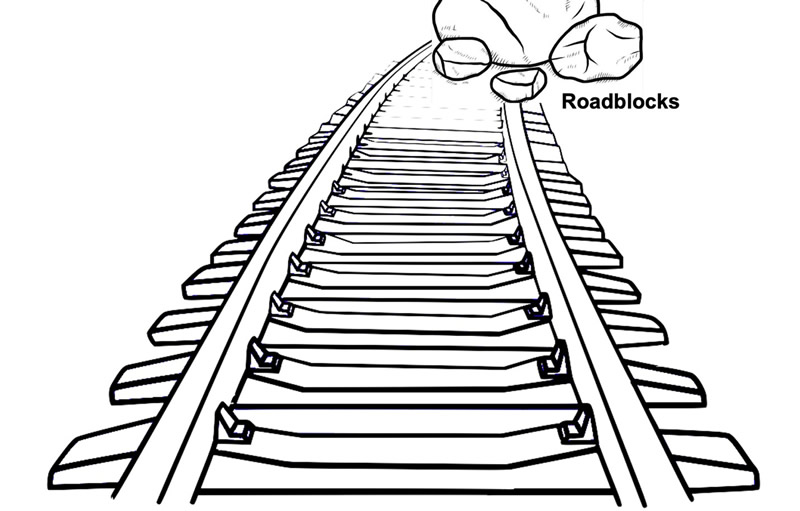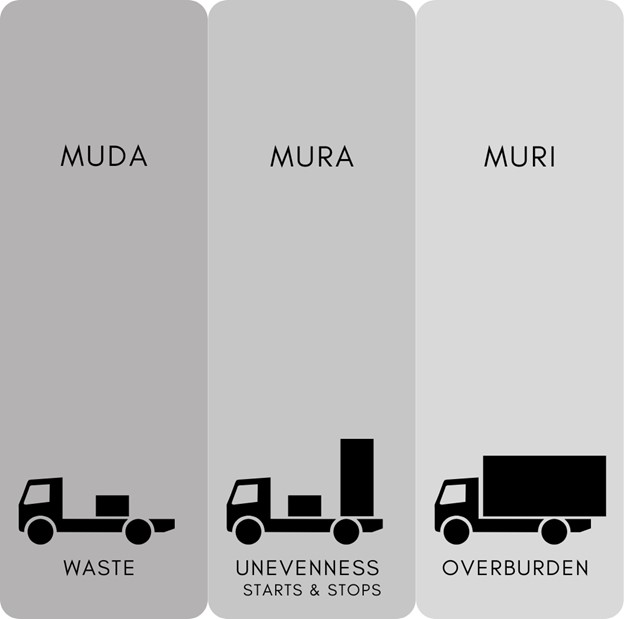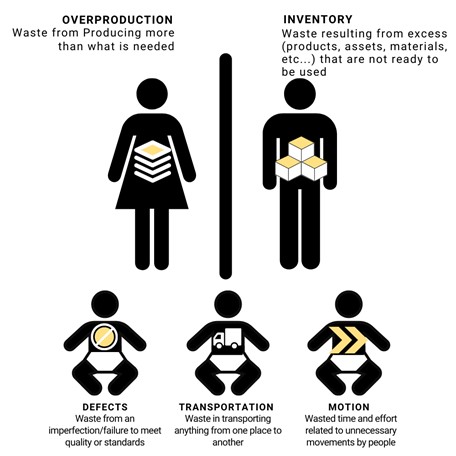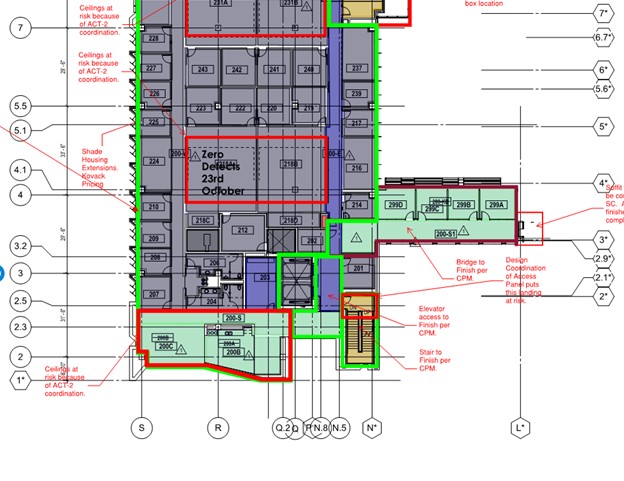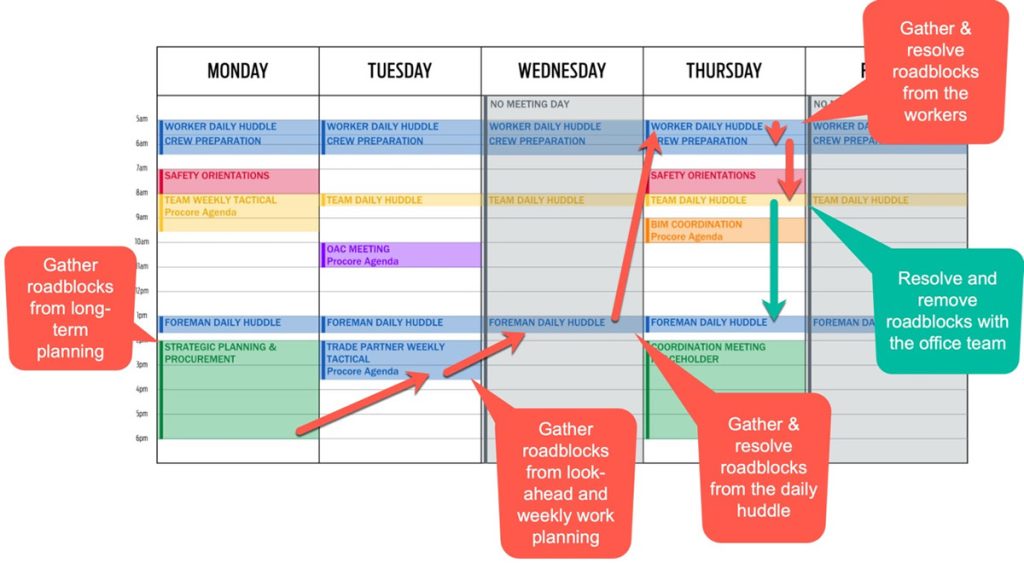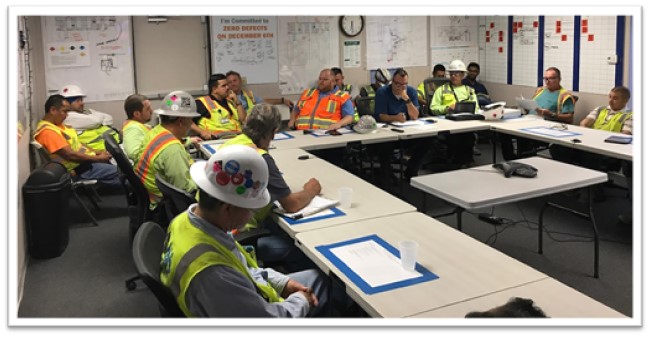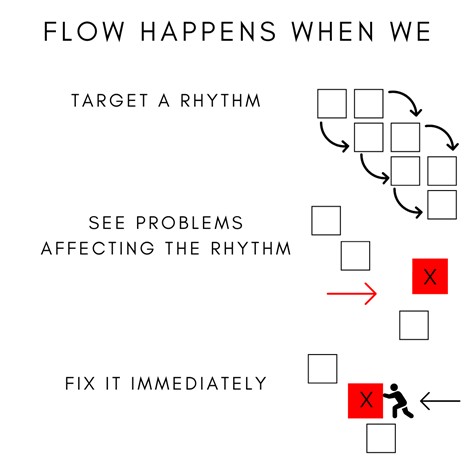Welcome back to the blog series where we will illustrate how Takt and Last Planner® work together to support the creation of flow on projects. In this blog post you will learn how the removal of roadblocks is key to any scheduling system, especially Takt & Last Planner®.
What is a roadblock?
Roadblocks: Anything that has the potential to impact the flow of work in construction that can be identified ahead of time and be removed before the work begins. These are temporary blocks and the removal of them should be the main focus of the team. Examples of roadblocks are missing information, a defective part or material, coordination issues, procurement issues, and errors in pre-planning. These could actually be called flow-blocks.
You are probably familiar with the word “constraints,” for this. We use the term constraint much differently than the Lean community at large. It would be my preference that we adjust back to the use of the word constraint as something that is mostly permanent and begin to use the word roadblock to define removable blocks to flow or production. Here is my definition of a constraint:
Constraints: A condition on or around the project that limits or restricts someone or something in the course of the project. These are typically permanent and cannot be removed. Examples of things that constrain a project might be adjacent geographical features, weather, lack of space, municipal restrictions, or anything else that permanently defines the parameters of the project. A project must be successfully planned and carried out within these constraints.
So, when we say roadblock, we mean anything that can slow down the work. Roadblocks can cause waste, overburden, or unevenness. They are flow-blocks.
Waste: Waste is anything that does not add value and is not necessary for the proper installation of the work. The 8 Wastes are:
- Overproduction
- Excess inventory–especially for materials
- Transportation
- Motion
- Defects
- Overprocessing
- Waiting, and,
- Not using the wisdom or experience of the team
Overproduction and excess inventory are the mother and father of all other wastes. Typically, when we overproduce in construction, we have an excess inventory which then needs to be transported—which causes excess motion. The distraction and process of moving inventory creates defects or allows us to ignore them. Defects then need to be fixed which causes over-processing, and that creates waiting and lost crew hours. And it is all waste because we know better and could have worked as a team. These cause most of the wasted money and time in construction. In addition to waste, we need to watch out for…
Overburden:
Overburden happens when workers are made to work too fast, a floor is stocked with too much material, or when a project management team has to process too much paperwork. Overburden occurs when a resource is utilized beyond its reasonable capacity.
Unevenness:
Unevenness, non-uniformity, and irregularity in construction can be described as variation in the flow of work, or the variation in the resources available to do the work. Unevenness causes waste because it causes variation. For example, if there is an unevenness in the delivery of materials to a project site, that may cause excess inventory or waiting, which are ultimately waste.
These are the main culprits that slow down our production on site and keep us from hitting our goals. So, how do we see roadblocks once we have a stable project, a team with capacity, and the desired flow? Here are a few strategies we will list in order:
First, start with roadblock removal, not PPC.
PPC is the calculation of promised tasks compared to promised tasks that were completed. For example, if the trade partners on a project collaborate on a weekly work plan with ten tasks and they were promised on certain days within the week, the team will work to carry out 100% of those commitments. If they failed to complete two of the ten, then the formula would be 8 divided by 10. which would equal 80%. So, the PPC for that week would be 80%. Each deviation would have a root cause analysis performed for it, and the trades responsible would know why it happened. These root causes are then used to improve how the work is carried out in the future. This is a fine system, but it should come after a team has a radically effective, fanatically executed, and wildly visual roadblock removal system. We should never see an effectively implemented PPC process onsite without first having a roadblock removal system.
Second, make your roadblock removal system highly visual.
We have seen constraint logs used extensively throughout the industry, and we praise those practitioners that are using them. However, if we want to take a step up in effectiveness, we will track roadblocks visually on maps. In construction scheduling, we are always attempting to visualize time and space. The questions to ask are:
*Can the trades, leaders, and stakeholders, who need and appreciate visuals in their communication, see where the roadblocks are located?
*How will this affect work?
*When, and how far ahead, will the roadblock need to be removed to maintain the flow of work?
In the example below, the map shows the status of each room by color. The colors match the Takt wagons on the Takt plan. The red boxes show where work has changed from change orders or design changes. The red leaders are roadblocks. Anyone can see at a glance what has been done, what roadblocks are or will be in the way, and can make strategic decisions that will create flow on the project.
Roadblock Removal Map:
In summary, we need a highly visual roadblock tracking and removal system around which the team can rally. Everyone should be able to see all roadblocks: how and when they affect work, and where they are located. Again, this is easily done in a Bluebeam Project with object statuses.
Third, make roadblock removal a focus in your meetings.
As shown below, every project will have a system of meetings to scale information from the master schedule to the make-ready look-ahead, weekly work plan, and the day plan.
Removing roadblocks collaboratively with the trade partners must be a main focus in all of your meetings.
Fourth, dig deeper in the look-ahead schedules.
In order to be truly effective in roadblock removal, we must spend more time in our make-ready look-ahead planning. This means spending the time studying, having deeper conversations with last planners, and looking farther and farther out for possible problems. To do this, help the trades see the flow of work, what work is coming up, and what commitments are being made. Then, they will help you identify the problems in the flow of work, the work coming up, and the commitments they are being asked to make. Basically, we need to dig deeper, visualize the work, and ensure work is made-ready for our wonderful trades.
And fifth, track it as a KPI (Key Performance Indicator).
A good way to track it as a KPI (Key Performance Indicator) would be by tracking your “Roadblock Removal Average” as shown in the next section.
Roadblock Removal Average:
When a roadblock is removed, the time between its removal date and when it would have impacted work is recorded. A weekly or daily average can be calculated from that data by the project team. This is a leading indicator that shows the duration in time we are clearing roadblocks ahead of the work. The target would be over 15 working days.
Finding, removing, or absorbing roadblocks allows work to flow. This must become the main focus of our teams as they support self-performed work as well as the work of trade partners, foremen, and workers onsite.
Stay with us next week when we discuss leveling work in a Takt-ed system.
On we go!


